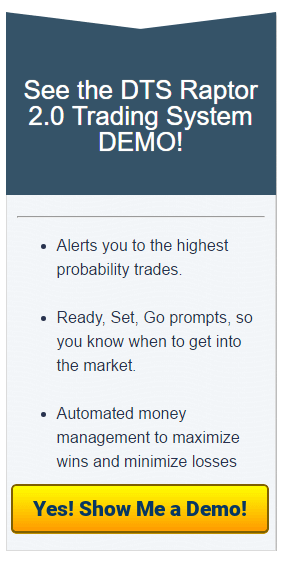Day Trading Tips and Tricks
Running a Clean Mean Fast Trading Machine
Best Practices and Troubleshooting for Fast Trading
Aside from “free” software sharing trading forums or low-end budget software sites, for the most part, online day trading software from a reputable trading company is very well designed. It has to be because of how much is riding on it for the people who use it.
 Sometimes, as much as computer users may not like to admit it, the problems they have with their day trading has nothing to with user error or software issues. Instead, the problems are due to the computer on which the software is running.
Sometimes, as much as computer users may not like to admit it, the problems they have with their day trading has nothing to with user error or software issues. Instead, the problems are due to the computer on which the software is running.
Ironically, one of the most overlooked parts of the day trading puzzle is the most obvious one – the trading computer. More often than not, when our support team is troubleshooting a customer service issue, the resolution is tied to a hardware problem.
Have a look at your trading computer, ask yourself –
Does it have other non-trading related software on it?
Are you running a “well known” retail virus protectors like Norton or McAfee?
When is the last time you had the hardware upgraded?
In other words, are you doing everything necessary to make sure you have a high-speed trading computer?
I understand that financial realities are always a part of the equation. However, here are some basic troubleshooting steps and recommendations for getting your trading workhorse in the best condition possible for fast trading.
Are you Running a Clean Mean Fast Trading Machine?
Think of your trading computer as a professional race car, and you are the driver. Every piece of metal in a performance race car has been designed to be as lightweight and safe as possible. When a professional driver step into his racing machine, he does so with absolute confidence that his “racing equipment” is in top condition, and its ready to compete to win!
How do think he would feel if, when he stepped into the car, he noticed leftover trash in the front seat, a slow oil leak and the wheels were a little under pressure. Each of these things by itself is not very serious. But, when added together, they sum up to a machine that is very likely to underperform. In other words, even if the driver does his best, he is still very unlikely to beat the competition.
Do you think he says to himself – It’s ok to say or good enough to do the job. I’ll take of it later? I doubt it. 🙂
If you want to setup your computer for the highest level of fast trading. We recommend having no other software on your trading computer – No Microsoft Office programs, no games, and none of the junk that typically comes with a new computer. In fact, if you are disciplined enough not to use the computer to surf the web or check your email, you don’t even need a virus protection program.
The virus protector decision is tricky. Most people cannot use a computer without checking their email or social network. If you are going to access the web for any reason, then you must have a virus protection program. But that does not mean you have to have it running when you are actively trading. Furthermore, the most common virus protection programs are known to be resource hogs. Instead, have a look at less resource intensive high performing programs, like Kaspersky or ESET.

Is Your Day Trading Software Performing Slowly?
If your day trading software seems to be performing slowly, make a quick check of a few things on your computer before you get on with tech support. First, make sure that you don’t have any resource-intensive programs running in the background. Most operating systems multitask very well these days but, it remains the case that when you have more than one application open, you’re consuming more resources. Ideally, you should only have your day trading software open when you are working the markets.
If the tech support for your day trading software can’t find anything wrong with the software itself, check your computer specifications. If you’re working on an older computer, there’s a good chance it isn’t powerful enough to run modern day trading software. Today’s computer models are stronger than machine created even five years ago. Even though modern day trading software requires relatively little computer resources, intensive, it is still designed to run on up to date computer hardware.
Is Your Trading Software Slow to Update?
If you’re not getting updates when you should, there’s likely a problem with your network. The first thing you’ll want to check is whether you have a live Internet connection at all. Testing your connection is easy to do: just open up your Internet browser and see if you can open a web page. If it says it is offline, you don’t have an active Internet connection.
On most Internet connections, the default action when the connection goes down is to reboot the modem. “Rebooting” involves unplugging the modem from its power source, waiting 30 seconds, and then plugging it back in. If that doesn’t fix the problem, you may have another issue. To minimize the instances where you do have issues with your Internet connection, work on a wired connection (“network cable”) instead of a wireless one. Also, make sure that, when you are on the Internet day trading, nobody else is using that same Internet connection.
Internet speed prices have significantly come down in price over the last year. You can now get what was once considered commercial speeds at a fraction of the cost. Ideally, for active trading, you should have the maximum speed possible out of your connection when you are day trading.




